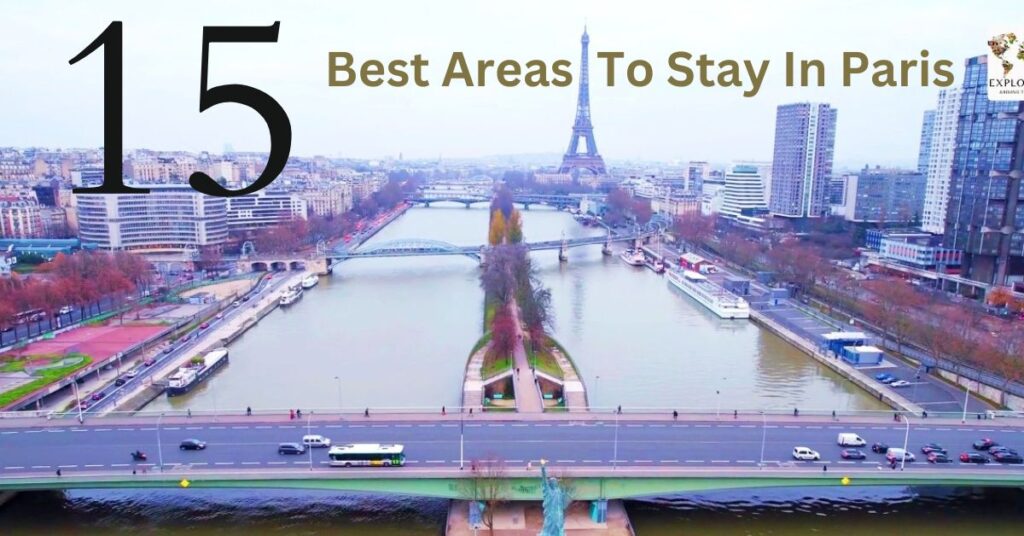Are you planning your first visit in 2024? With our comprehensive first-timer’s guide, you’ll learn about the 15 best areas to stay in Paris. Explore the city’s romantic charm, iconic landmarks, and diverse neighborhoods, each of which provides a distinct Parisian experience.
Many visitors dream of visiting Paris, the City of Lights. However, with its arrondissements (districts), each with its own distinct charm, deciding where to stay can be difficult. Don’t worry, first-time visitors! This guide will assist you in navigating the Parisian landscape and locating the ideal lodging for your memorable trip in 2024.
1) Le Marais
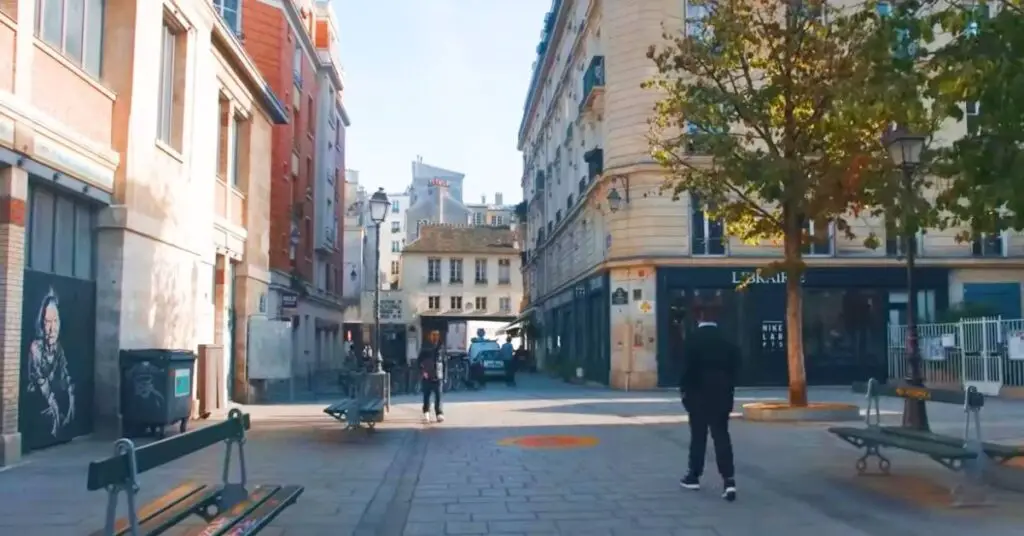
Le Marais, a district in Paris’ 3rd and 4th arrondissements, is renowned for its medieval architecture, narrow streets, and rich cultural scene. The district is known for its historical charms, such as the 12th-century architecture and charming squares like Place des Vosges. Le Marais is also known for its trendy vibes, featuring high-end brands and independent designers. The district has been an artistic hub, attracting painters, writers, and creatives throughout history.
Today, it is a cultural hotspot with numerous art galleries, museums, and performance spaces. The Musée Picasso, housed in the Hôtel Salé, houses an extensive collection of Picasso’s masterpieces. Le Marais is also a culinary paradise, offering traditional French bistros and international cuisine. Visitors can explore the Jewish Quarter and indulge in gourmet dining at Michelin-starred restaurants. As the sun sets, Le Marais transforms into a lively nightlife destination with trendy bars, historic pubs, and fashionable nightclubs.
2) Saint-Germain-des-Prés
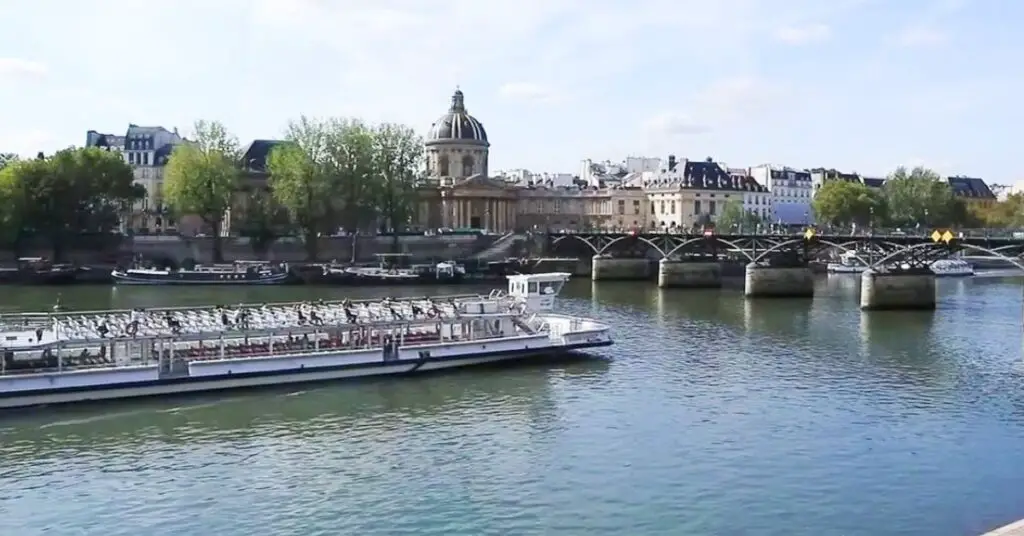
Saint-Germain-des-Prés, a 6th-arrondissement of Paris, is renowned for its intellectualism, artistic elegance, and timeless charm. It is associated with literary greats like Jean-Paul Sartre, Simone de Beauvoir, and Albert Camus, who frequented the iconic cafes Les Deux Magots and Café de Flore. The neighborhood is home to numerous art galleries, charming art studios, boutiques, and antique shops, with the Saint-Germain-des-Prés church serving as a cultural landmark.
The cobblestone streets are filled with charming boutiques offering high-end fashion, unique accessories, and artisanal goods. The culinary scene is diverse, ranging from classic French bistros to innovative gastronomic experiences. Visitors can enjoy leisurely meals at charming cafes, bistros, or Michelin-starred restaurants. The Jardin du Luxembourg offers a serene retreat. Boutique hotels and elegant accommodations are available, and the area is close to iconic landmarks like the Louvre Museum, the Musée d’Orsay, and Notre-Dame Cathedral.
3) Latin Quarter
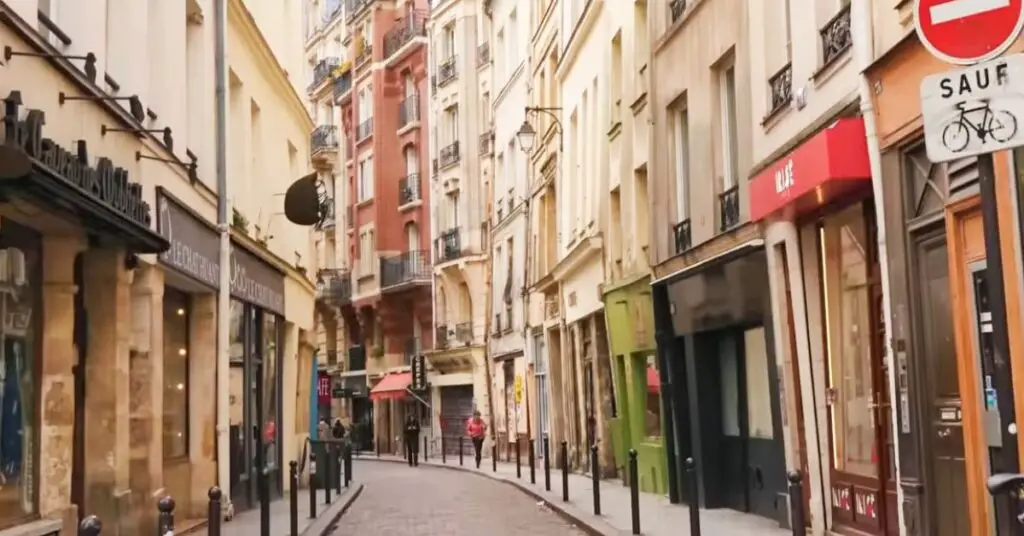
The Latin Quarter, located on the left bank of the Seine River, is a historic and vibrant neighborhood in Paris known for its intellectual legacy, lively atmosphere, and diverse mix of students and locals. The Sorbonne University, one of the world’s oldest universities, is located at its heart, and the area is renowned for its historic architecture, medieval buildings, charming courtyards, and hidden squares.
The Panthéon, a neoclassical masterpiece, serves as a mausoleum for some of France’s most illustrious citizens. The district has been a haven for writers and artists, with iconic figures like Ernest Hemingway and James Joyce drawing inspiration from its cafes and bookshops. The district’s proximity to the Seine River provides a perfect setting for leisurely strolls, and the district offers a diverse culinary scene. The Rue Mouffetard market is a sensory delight, and the Cluny Museum showcases medieval art and artifacts.
4) Champs-Élysées
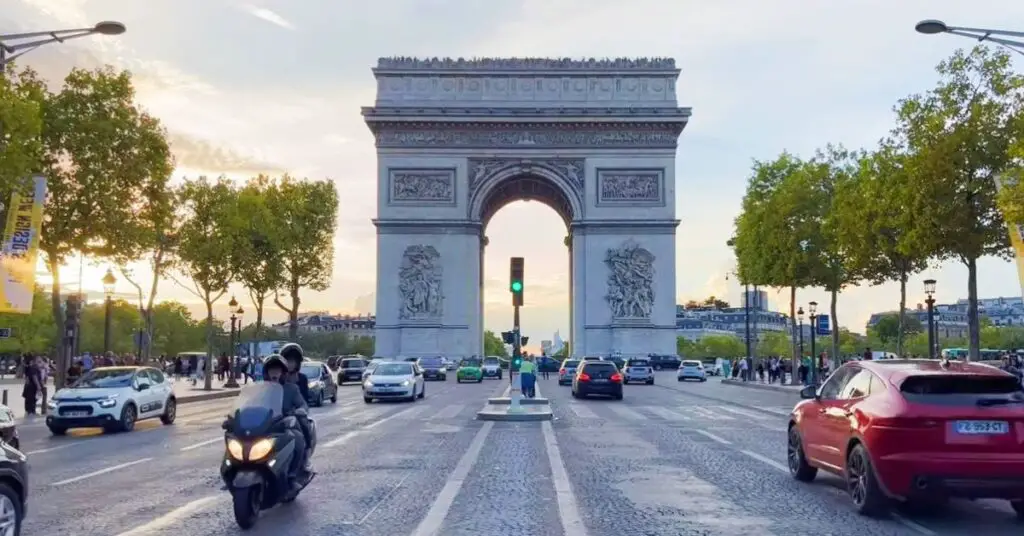
The Champs-Élysées, a symbol of Parisian grandeur, is a boulevard stretching from Place de la Concorde to the Arc de Triomphe. It is known for its luxury, glamour, and sophistication, with the Arc de Triomphe, a monument honoring those who fought and died for France in the French Revolutionary and Napoleonic Wars, adding an extra layer of grandeur.
The avenue is a paradise for shopping enthusiasts, offering luxury boutiques, flagship stores, and high-end brands. It also houses theaters, cultural venues, and dining options. As the sun sets, the avenue transforms into a magical spectacle, casting a golden glow on the surrounding architecture. It serves as a focal point for major cultural events and celebrations in Paris, such as the annual Bastille Day parade and New Year’s Eve celebrations. Its proximity to green spaces like the Tuileries Garden and Parc Monceau offers tranquil respites for travelers.
5) Montmartre
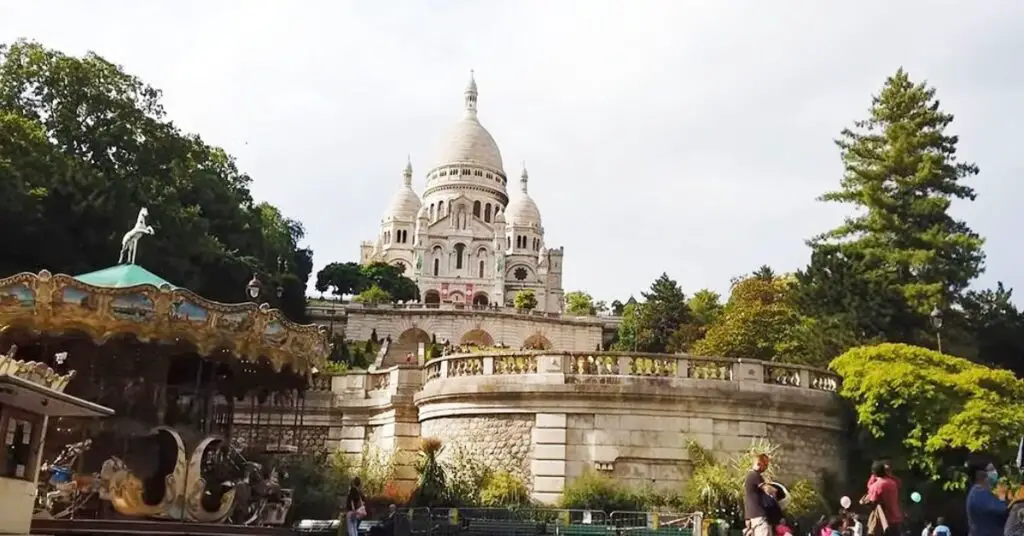
Montmartre, located on the northern edge of Paris, is a popular destination for artists, writers, and dreamers due to its bohemian ambiance, historic charm, and panoramic city views. The neighborhood has been home to notable artists like Pablo Picasso, Vincent van Gogh, and Henri Toulouse-Lautrec, who found inspiration in its narrow streets, charming cafes, and vibrant atmosphere. The Sacré-Coeur Basilica, a Romanesque-Byzantine masterpiece, dominates the skyline, offering stunning city views.
Place du Tertre, a charming square where local artists showcase their work, is a popular spot for people-watching and leisurely meals. The neighborhood’s cobblestone streets and charming cafés add to its bygone charm, while the Moulin Rouge cabaret, a symbol of the Belle Époque, has offered extravagant shows since the late 19th century. The neighborhood’s vibrant street art adds a contemporary flair to its artistic heritage.
6) Île de la Cité
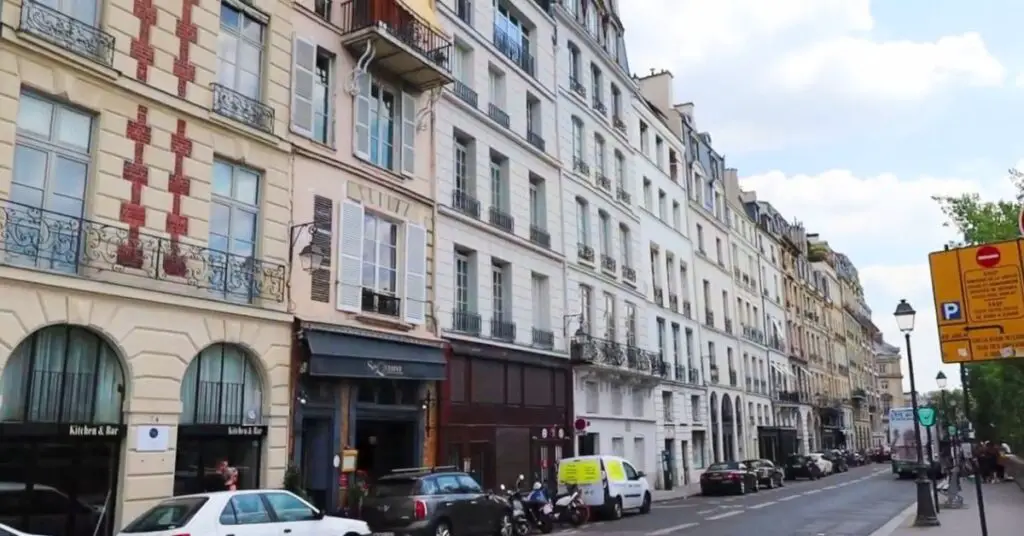
Île de la Cité, located in the heart of Paris, is a historic area with centuries of architectural splendor, cultural richness, and iconic landmarks. The Notre-Dame Cathedral, a masterpiece of French Gothic architecture, is located at the eastern tip of the island. The island is a treasure trove of historic streets, charming squares, and hidden gems, including the Conciergerie and Sainte-Chapelle.
Pont Neuf, the oldest surviving bridge in Paris, offers stunning views of the Seine River. The flower and bird market on Place Louis Lépine offers a vibrant atmosphere surrounded by historic buildings and bird melodies. The Palais de Justice, a former royal palace, and the Square du Vert-Galant provide peaceful escapes with greenery and Seine views.
7) Saint-Louis Island
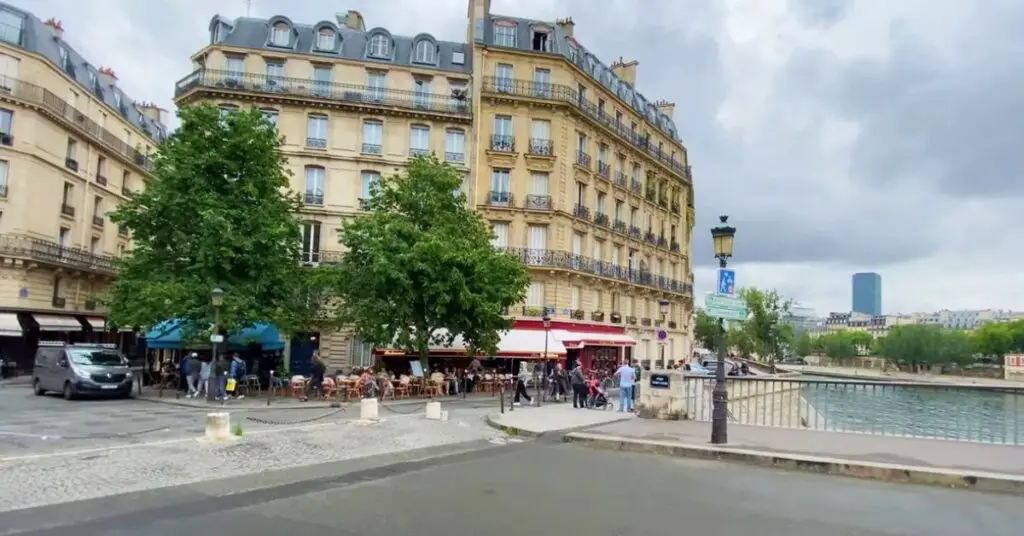
Saint-Louis Island, located on the Seine River, is a serene escape from the city’s hustle and bustle. Its architectural elegance, characterized by 17th-century buildings and charming courtyards, creates a picturesque atmosphere. The island is home to a variety of boutiques and artisanal shops, including Berthillon ice cream, renowned for its exquisite flavors.
The island offers romantic views of the Seine River and the surrounding cityscape, making it an ideal spot for boat cruises and exploring the Seine by water. The central square, Place Louis-Aragon, is a serene oasis for relaxation. The island is also close to iconic landmarks like Notre-Dame Cathedral and the Marais district, making it an ideal spot to explore Paris’s diverse facets.
8) Canal Saint-Martin
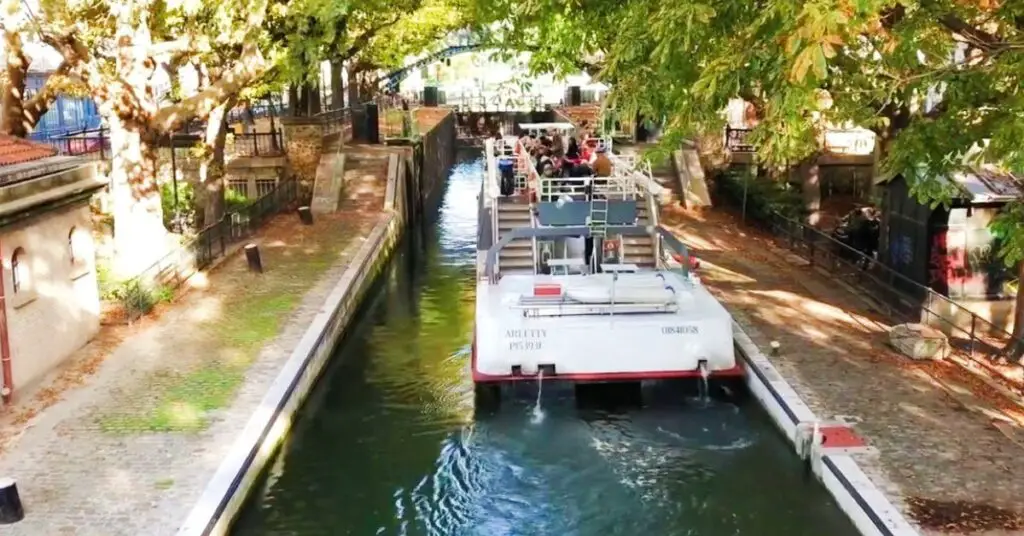
Canal Saint-Martin, a hidden gem in northeastern Paris, is known for its picturesque canal, trendy boutiques, and artistic spirit. The 4.5-kilometer canal, with its unique locks, offers a tranquil escape from the city’s hustle and bustle. The district’s vibrant street scene, featuring colorful murals and quirky graffiti, adds a contemporary touch to the bohemian atmosphere.
The area is dotted with charming cafés and restaurants, offering a lively atmosphere. Canal Saint-Martin also hosts cultural hubs, including independent cinemas and theaters, offering opportunities to experience the artsy vibe. The neighborhood is surrounded by parks and green spaces, including Parc des Buttes-Chaumont, offering a peaceful retreat for relaxation and outdoor activities.
9) Bastille
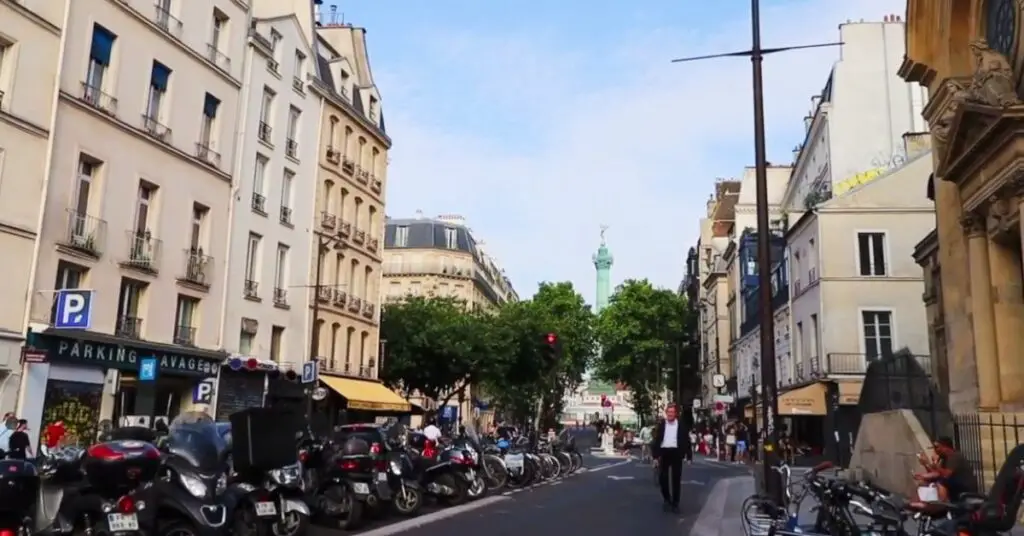
The Bastille neighborhood in eastern Paris is a vibrant hub of culture, nightlife, and modern urban living. Named after the historic Bastille prison, it was a symbol of royal tyranny during the French Revolution. The square, Place de la Bastille, is a popular gathering place for locals and tourists. The Opéra Bastille, a modern architectural landmark, is located nearby, offering a diverse range of performances.
The neighborhood is also near the trendy Le Marais district, known for its historic architecture and vibrant LGBTQ+ scene. Bastille’s nightlife scene is diverse, with bars, clubs, and music venues offering a variety of entertainment options.
10) Pigalle
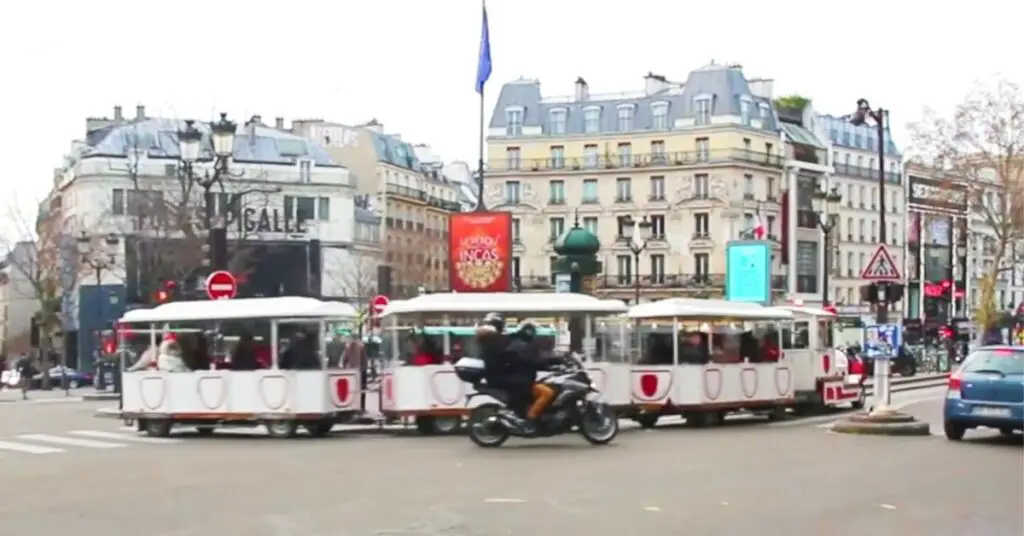
Pigalle, located on Montmartre’s slopes in the 18th arrondissement of Paris, is known for its vibrant atmosphere, historic cabarets, artistic spirit, and lively nightlife. The Moulin Rouge, a legendary cabaret established in 1889, is a must-see attraction. Pigalle has a rich artistic legacy, with the studios of renowned artists like Pablo Picasso and Vincent van Gogh located nearby.
Contemporary artists and street art also contribute to the vibrant artistic landscape. Place Pigalle, a bustling square surrounded by cafes, shops, and theaters, serves as a meeting point and hub. The neighborhood has undergone a transformation in recent years, becoming a more diverse and eclectic destination, attracting a mix of creatives, foodies, and nightlife enthusiasts. Pigalle’s blend of historic charm and modern energy makes it a unique and evolving destination.
11) République
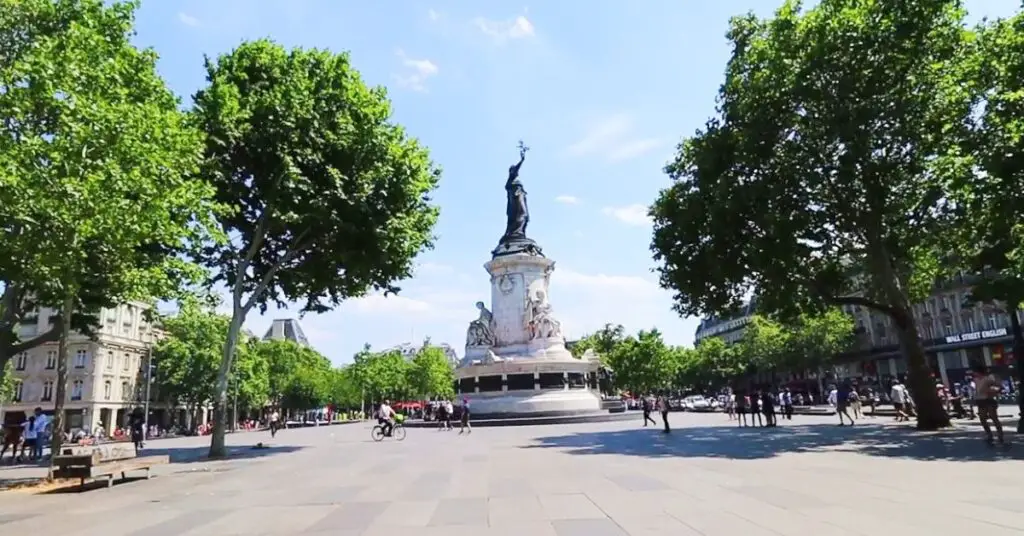
The République neighborhood in Paris is a vibrant hub that embodies the city’s spirit of liberty, equality, and fraternity. Its central square, Place de la République, is a symbol of the French Republic, a large public space with a monumental statue of Marianne. The area is known for its strong civic engagement and activism, often serving as a focal point for political demonstrations and social movements.
The neighborhood is also characterized by its cultural diversity, with a mix of ethnic restaurants, shops, and cultural spaces. Residents and visitors can explore the diverse tapestry of international cuisines and unique stores. The area also boasts a vibrant arts and performance scene, with nearby venues like Théâtre de la Ville and Théâtre du Châtelet offering a variety of theatrical performances, dance productions, and concerts.
12) Batignolles
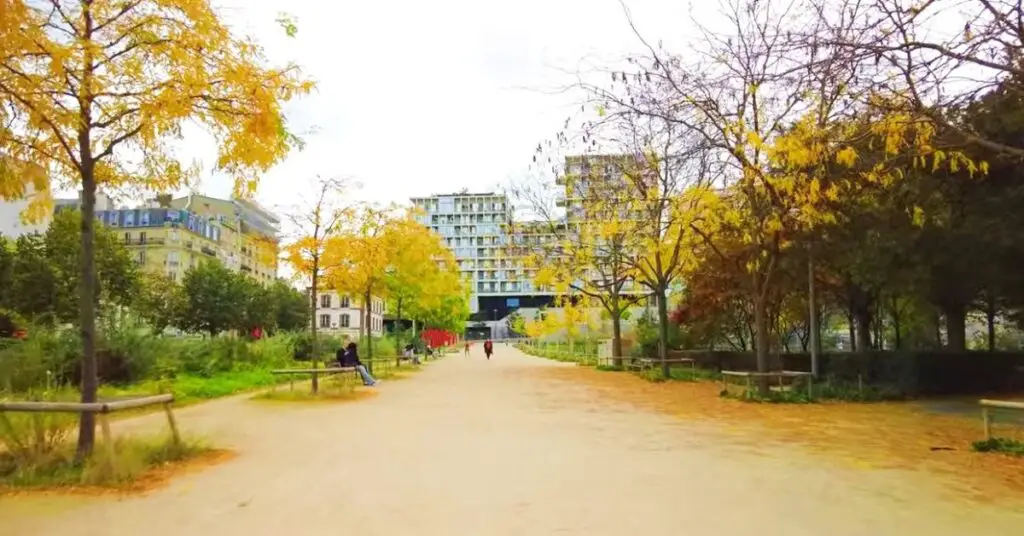
Batignolles, a hidden gem in Paris’ 17th arrondissement, offers a peaceful yet vibrant experience with its tree-lined streets, lively squares, and abundance of green spaces. The neighborhood is home to the Square des Batignolles, a picturesque park with meandering paths, charming bridges, and a pond. Parc Martin Luther King, a modern park, adds to the green allure with wide lawns, play areas, and a reflective pool.
Batignolles is also home to the Clichy-Batignolles eco-district, an innovative urban development project focusing on sustainability and environmental consciousness. The neighborhood is known for its artistic vibe, with numerous galleries, ateliers, and creative spaces. The village atmosphere is maintained by cobblestone streets, small squares, and historic buildings. Place du Docteur Félix Lobligeois, a central square, serves as a focal point for community events and activities.
13) Luxembourg Gardens
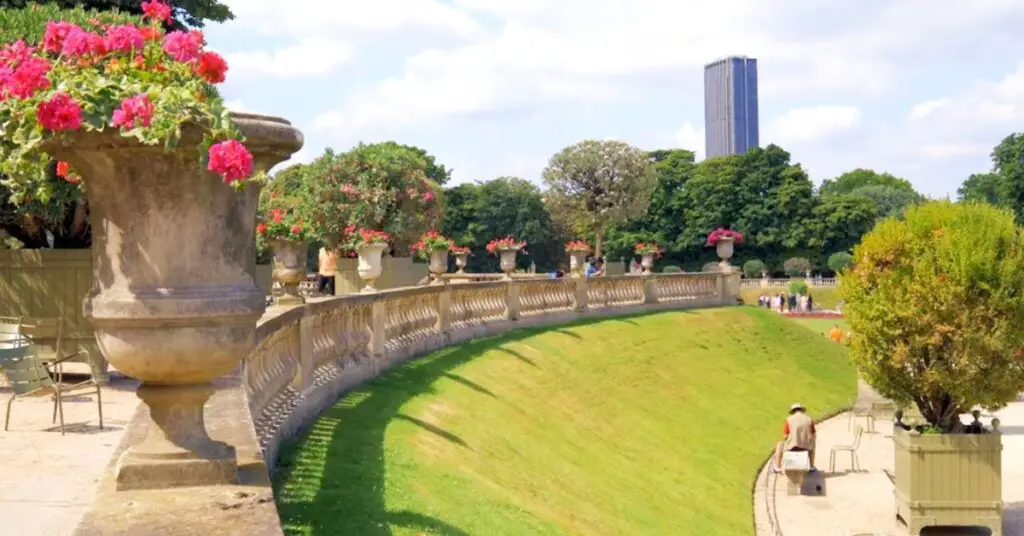
Luxembourg Gardens, located in Paris’ Left Bank, are a timeless oasis of beauty and tranquility. Founded in the 17th century by Queen Marie de’ Medici, the gardens feature formal French garden design, symmetrical flowerbeds, and a central octagonal pond.
The Luxembourg Palace, a stunning example of classical French architecture, is at the heart of the gardens. The Medici Fountain, a 17th-century masterpiece, adds a romantic touch to the serene setting. The gardens have inspired numerous artists and writers and are conveniently located near Saint-Germain-des-Prés and the Latin Quarter.
14) Ménilmontant
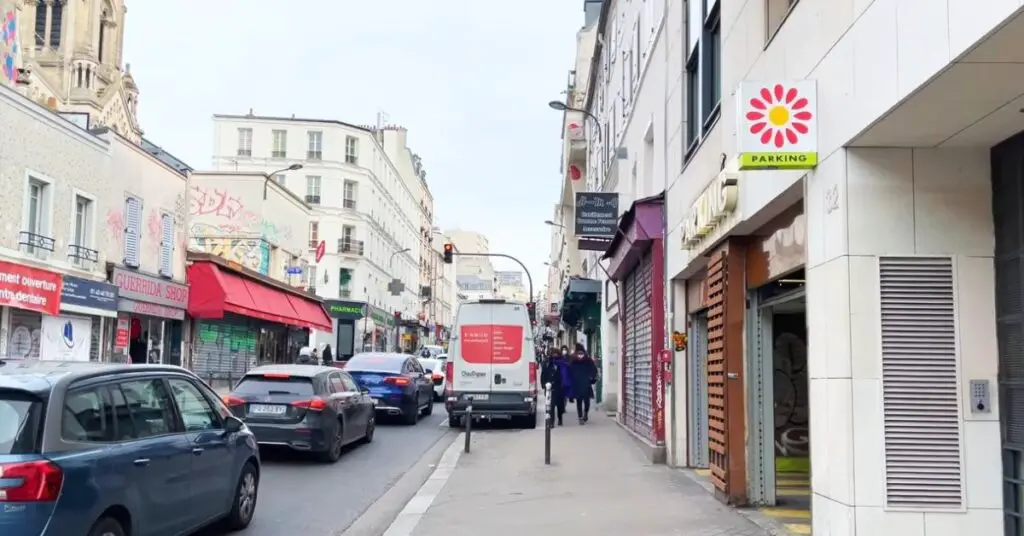
Ménilmontant, located in the 20th arrondissement of Paris, is a bohemian neighborhood known for its artistic flair and village charm. The neighborhood is home to the Parc de Belleville, a verdant park with panoramic views of Paris, and the Belleville Village, a vibrant district with narrow streets and eclectic shops. The streets are lined with trendy cafés, bistros, and neighborhood establishments, offering a diverse culinary experience.
The neighborhood maintains a village-like atmosphere with narrow streets, hidden squares, and a close-knit community. The Belleville Cemetery, a historic burial ground, adds a touch of history to the neighborhood. Overall, Ménilmontant offers a unique blend of diversity, creativity, and an authentic Parisian atmosphere.
15) Trocadéro
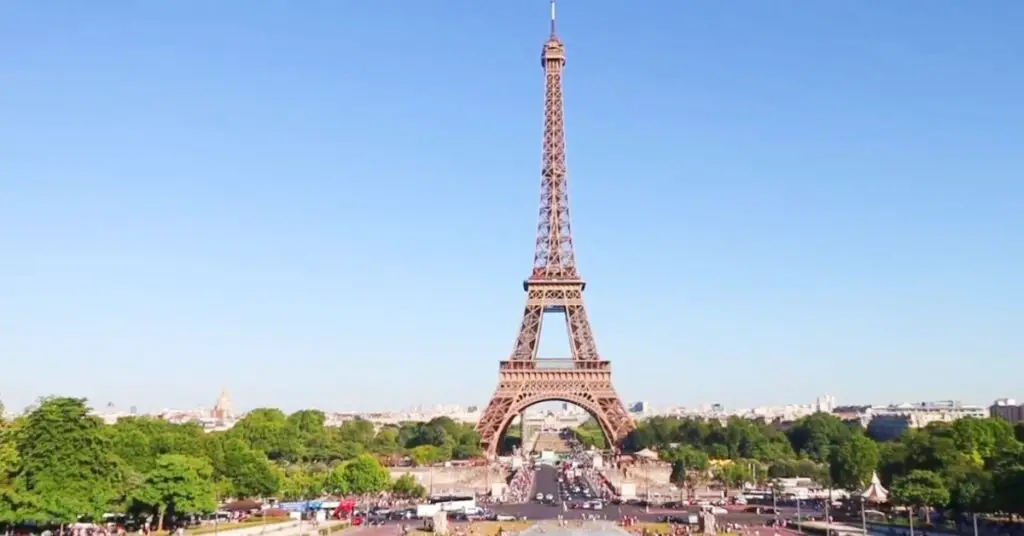
Trocadéro, located in the 16th arrondissement of Paris, is a renowned neighborhood known for its stunning panoramic view of the Eiffel Tower. The neighborhood is home to the Palais de Chaillot, an architectural masterpiece with museums, theaters, and exhibition spaces.
The Esplanade du Trocadéro, a grand square with fountains and gardens, offers an unparalleled view of the Eiffel Tower. It’s elevated position across the Seine River provides a magical setting for visitors to appreciate the tower’s intricate iron lattice architecture. The Trocadéro Aquarium, located within the Palais de Chaillot, offers an educational and immersive experience for marine life enthusiasts.
FAQs
-
Which area of Paris is best for first-time visitors?
It is recommended that first-time visitors to Paris stay in the 7th Arrondissement, near the Eiffel Tower, or in Le Marais, the heart of medieval Paris.
-
Which Parisian arrondissement is the best place to stay?
This is a difficult topic to answer because the ideal arrondissement for you will vary depending on your travel preferences, interests, and financial situation. Nonetheless, the 1st (Louvre), 4th (Marais), 5th (Latin Quarter), 6th (St-Germain-des-Prés), and 7th (Eiffel Tower) arrondissements are among the most visited by tourists.
-
Which Paris arrondissement is easiest to walk by?
In general, the central arrondissements of Paris, such as the 1st, 4th, 5th, and 6th, are the most walkable. Some of the city’s top tourist attractions are located in these arrondissements, which are also well served by public transportation.
-
Which Paris arrondissement is the most secure?
All of the arrondissements in Paris are reasonably safe, and the city is generally safe. However, because there are more police officers stationed there, the tourist-friendly arrondissements are typically the safest.
-
Which Paris arrondissement offers the best value for accommodation?
The outside arrondissements, such as the 19th and 20th, are usually the least expensive places to stay in Paris. Even though these arrondissements are not as central as the others, there is nevertheless good public transport access between them.
-
Are there any reasonably priced hotels in Paris?
Actually, even in the most central arrondissements of Paris, there are many reasonably priced hotels. You may frequently discover good hotel deals if you are flexible with your dates.
-
Which arrondissement is best for those who enjoy history?
The 1st arrondissement, which houses the Tuileries Gardens and the Louvre Museum, is the greatest for history buffs. The Latin Quarter and the Fourth (Marais) are other excellent choices because they have a lot of historical structures and sites.
-
Which arrondissement is best for food lovers?
With so many Michelin-starred restaurants, the 7th arrondissement is the best for foodies. The 4th (Marais) and 6th (St-Germain-des-Prés) are also excellent choices because they provide a large selection of eateries.
-
Which arrondissement is suitable for families?
The 7th arrondissement, which houses the Champs-Élysées and the Eiffel Tower, is a perfect neighborhood for families. Given that it has a lot of parks and gardens, the 16th is another excellent choice.
-
Which season is best for traveling to Paris?
With their pleasant temperatures and reduced crowds, spring and autumn are among the best seasons to visit Paris. All year round, though, Paris is a stunning city to visit.
-
What is the best way to go from the airport to my hotel?
The metro, the RER rail, and taxis are the available modes of transportation for getting from the airport to your hotel. How much luggage you have and your budget will determine which option is perfect for you.
-
Does traveling to Paris require me to speak French?
A good understanding of French will undoubtedly enhance your time in France, but it is not required to visit Paris. Although there are many English speakers in Paris, it never hurts to know a few simple French words and phrases.
-
Which hotels in Paris are among the greatest?
That essentially depends on your choices and budget, because Paris is home to several excellent hotels. Here are some recommendations:
Hotel Le Bristol
Hôtel National des Arts et Métiers
Le Meurice
Hôtel Plaza Athénée
Hotel du Louvre
